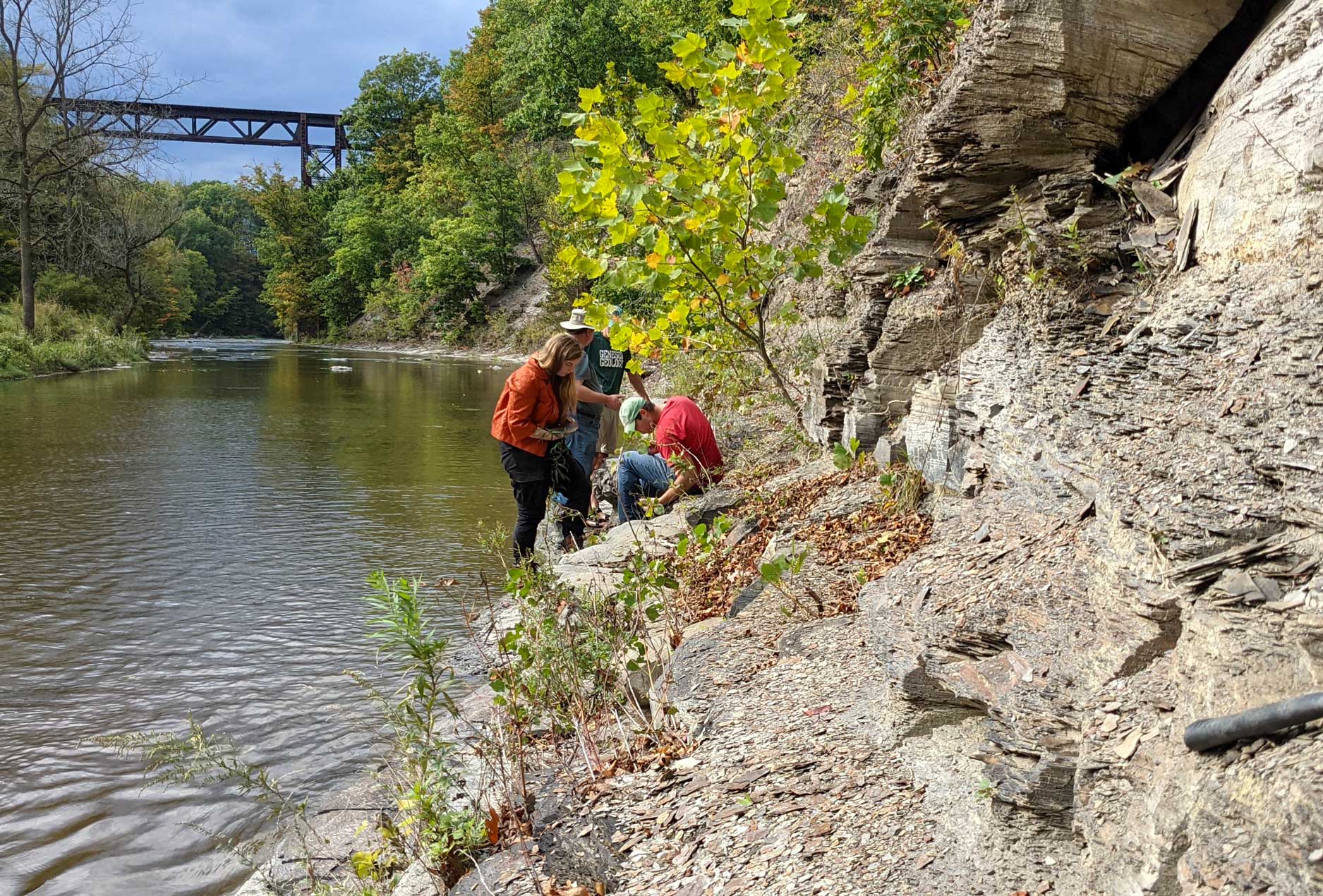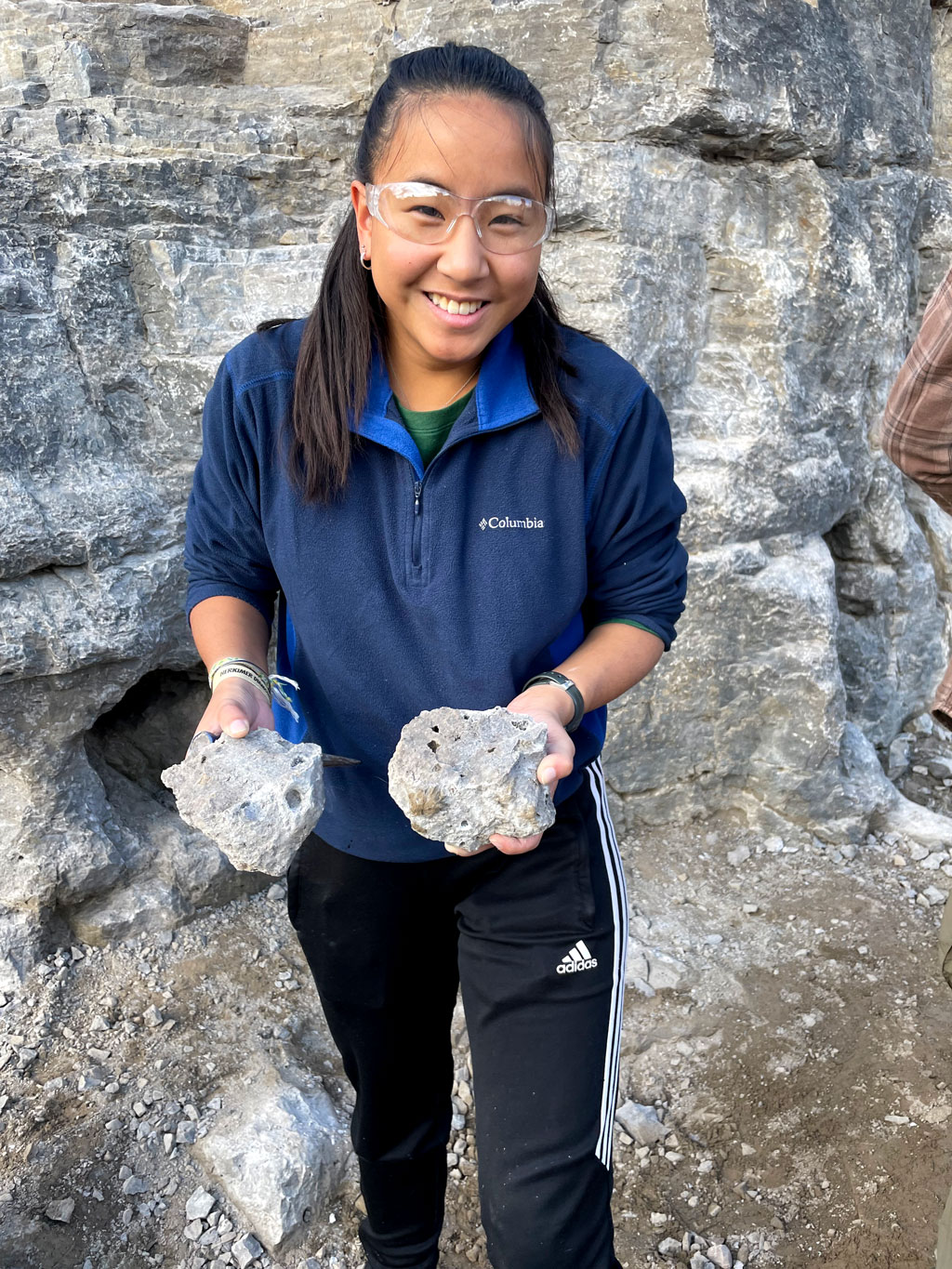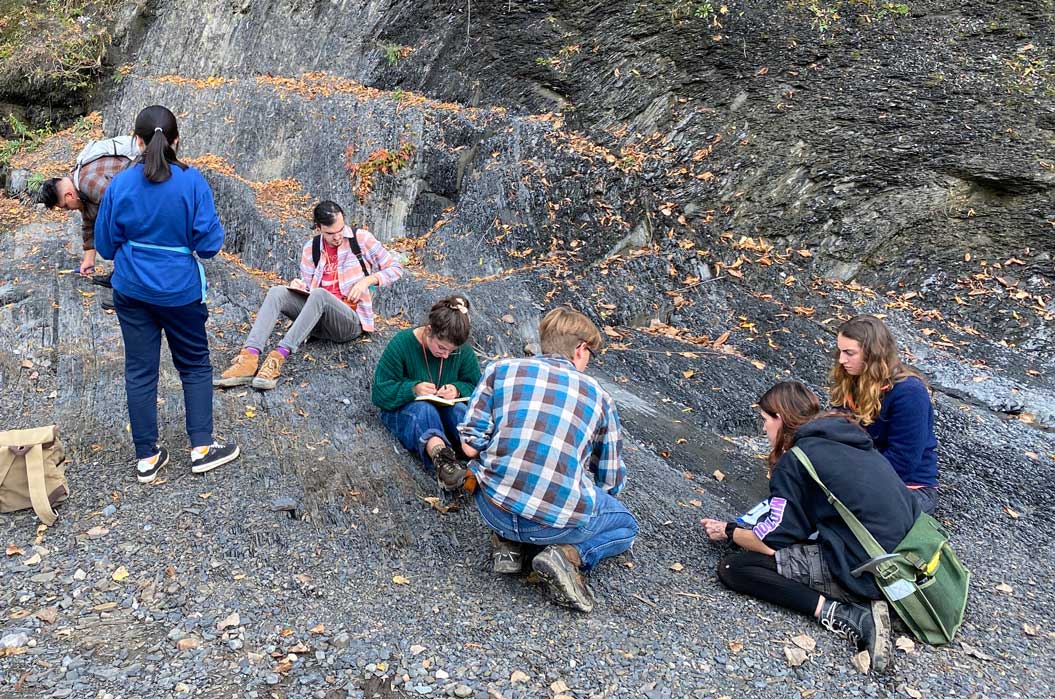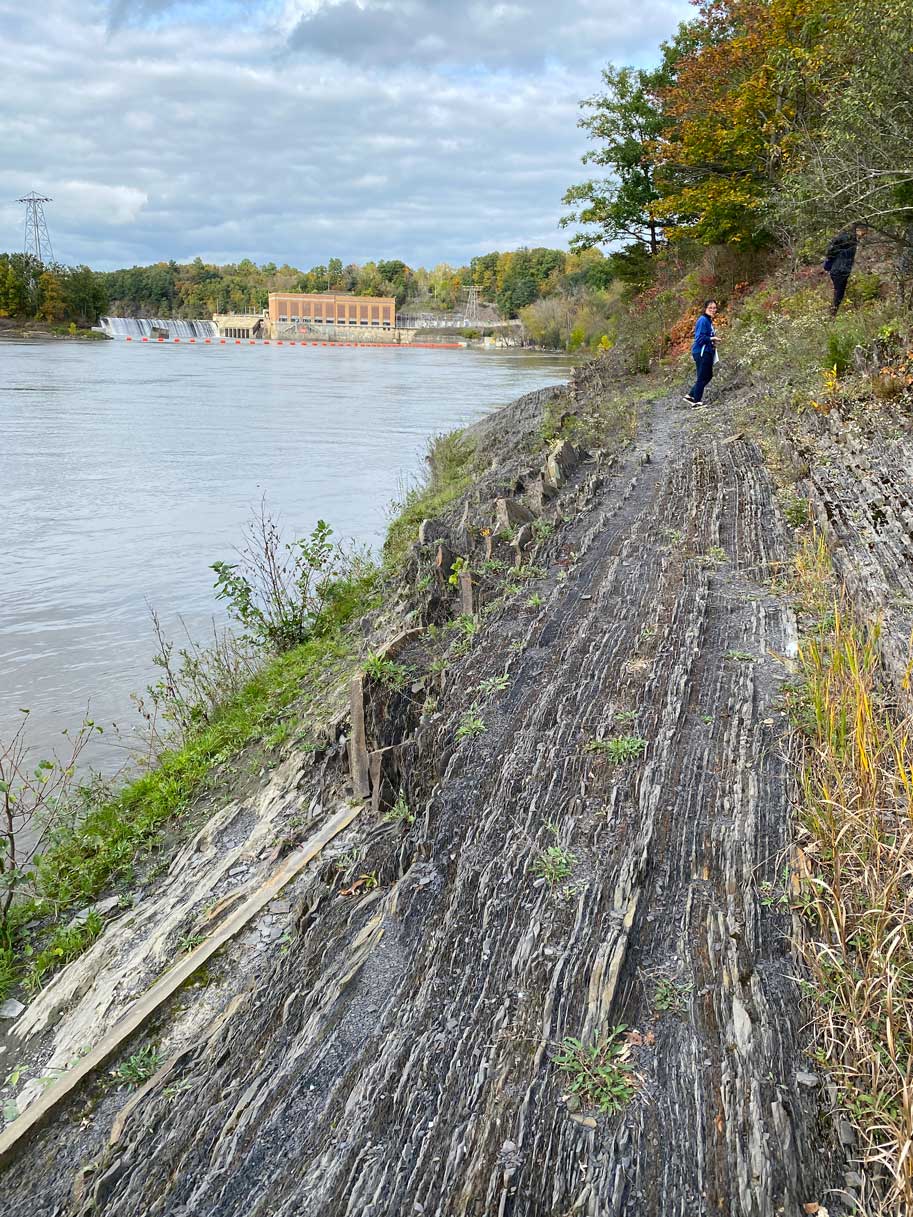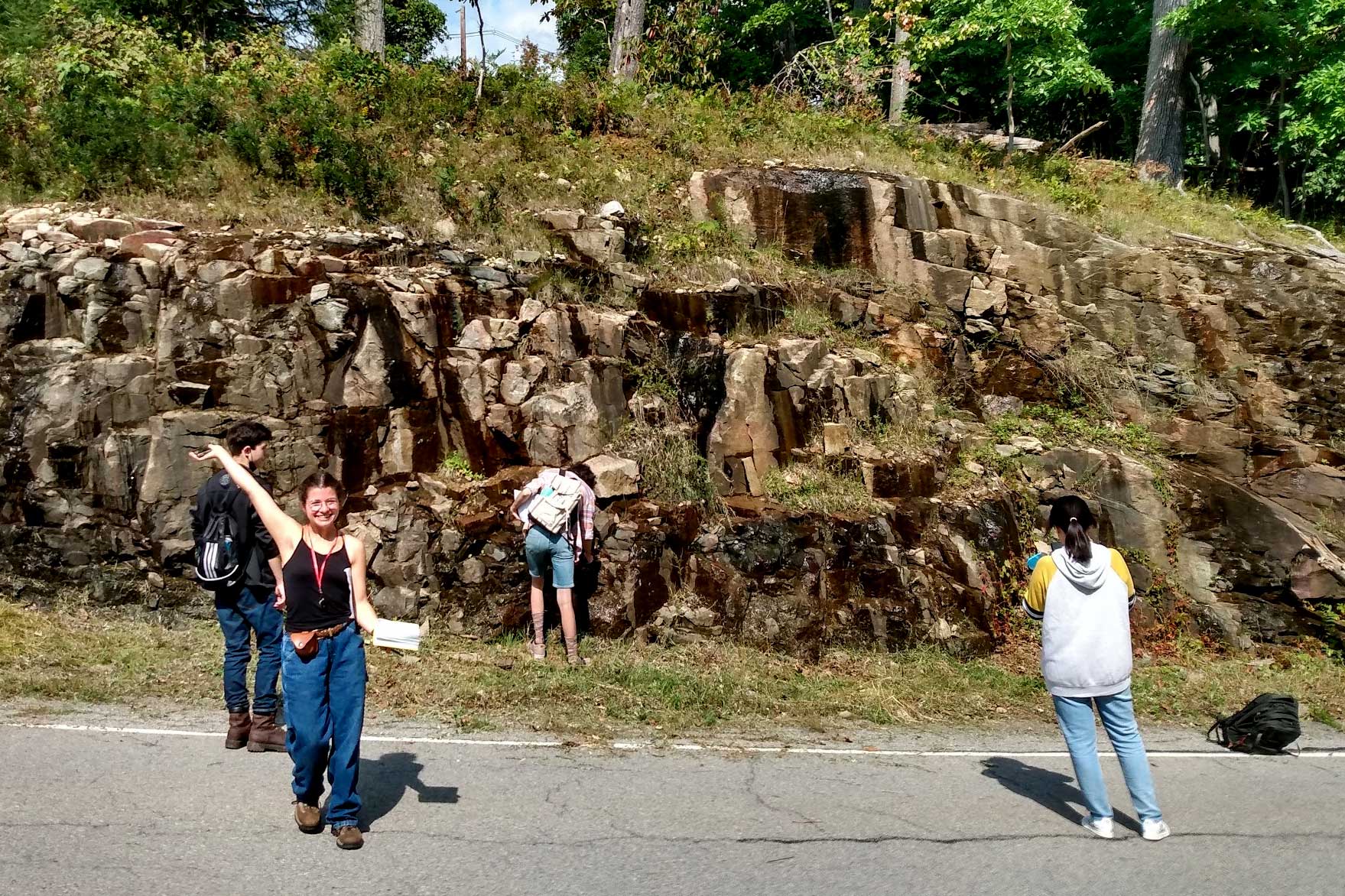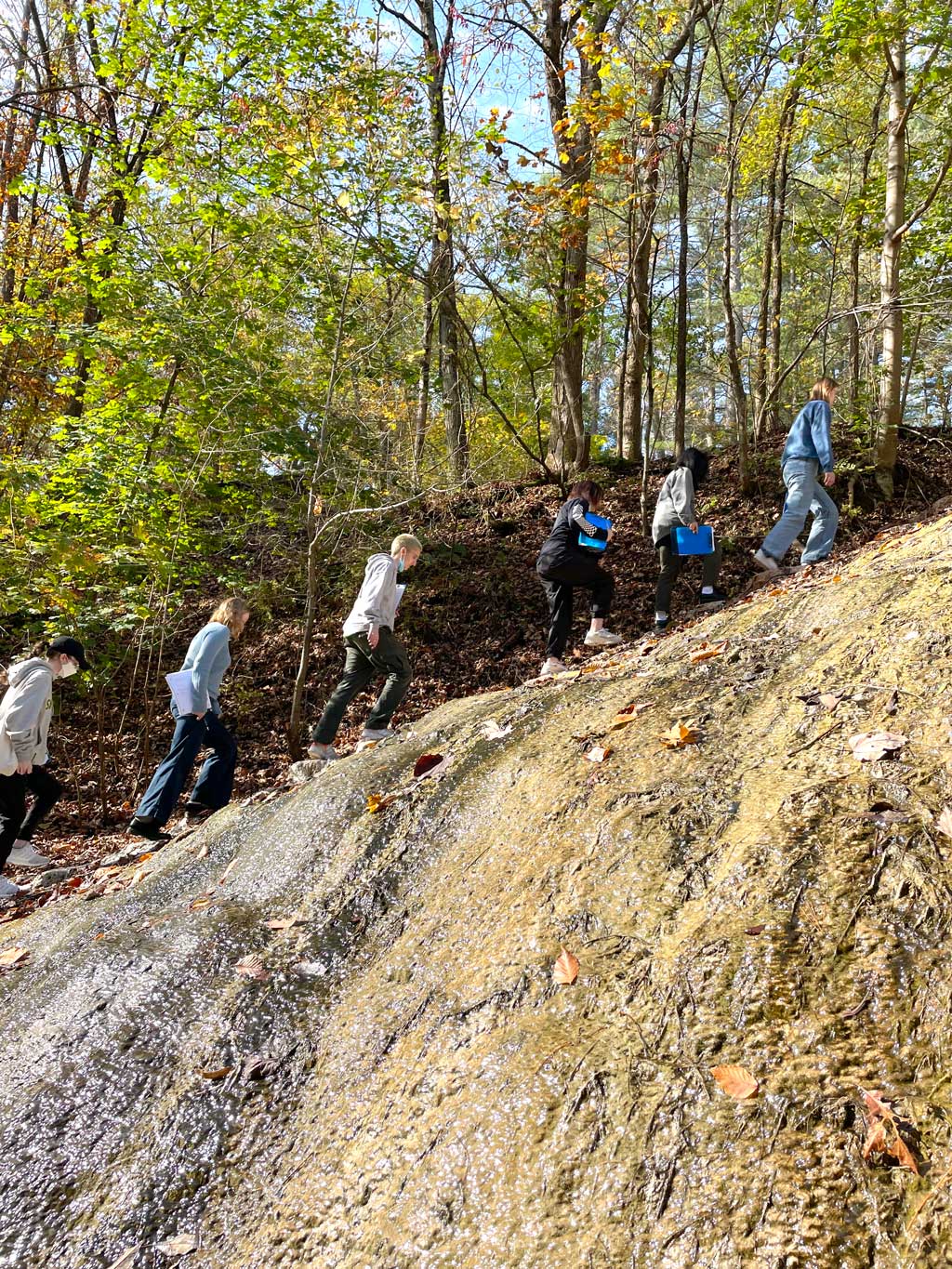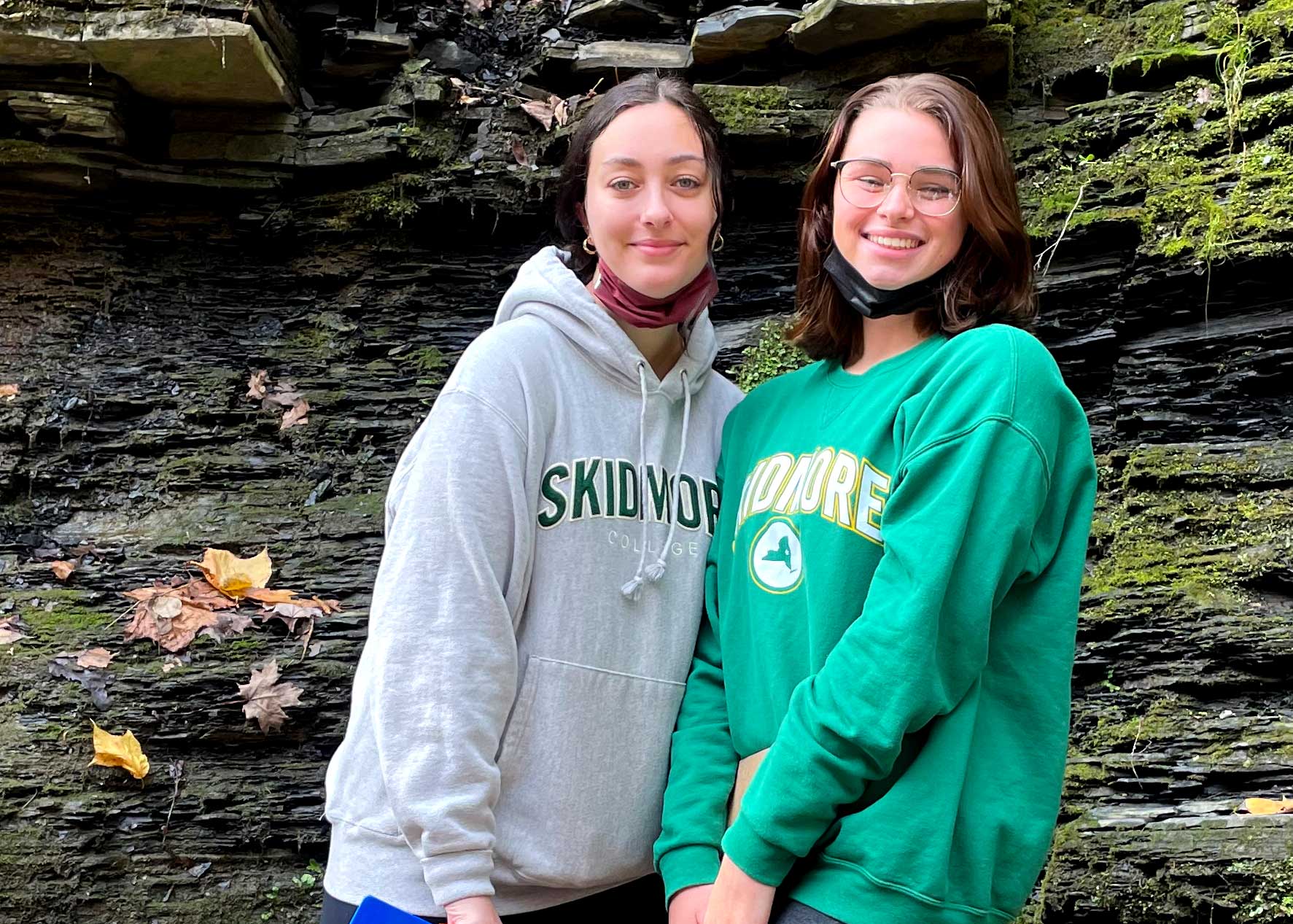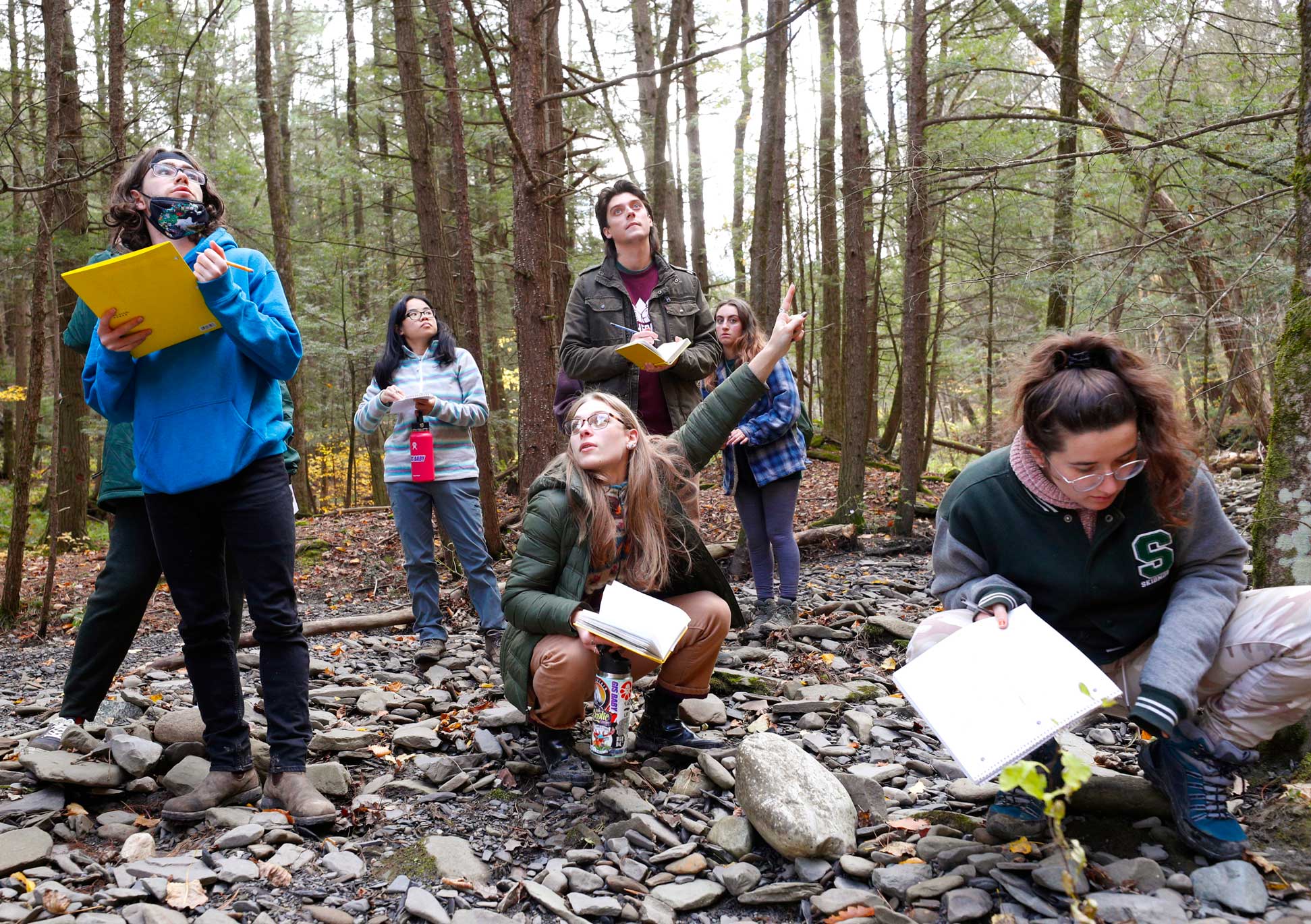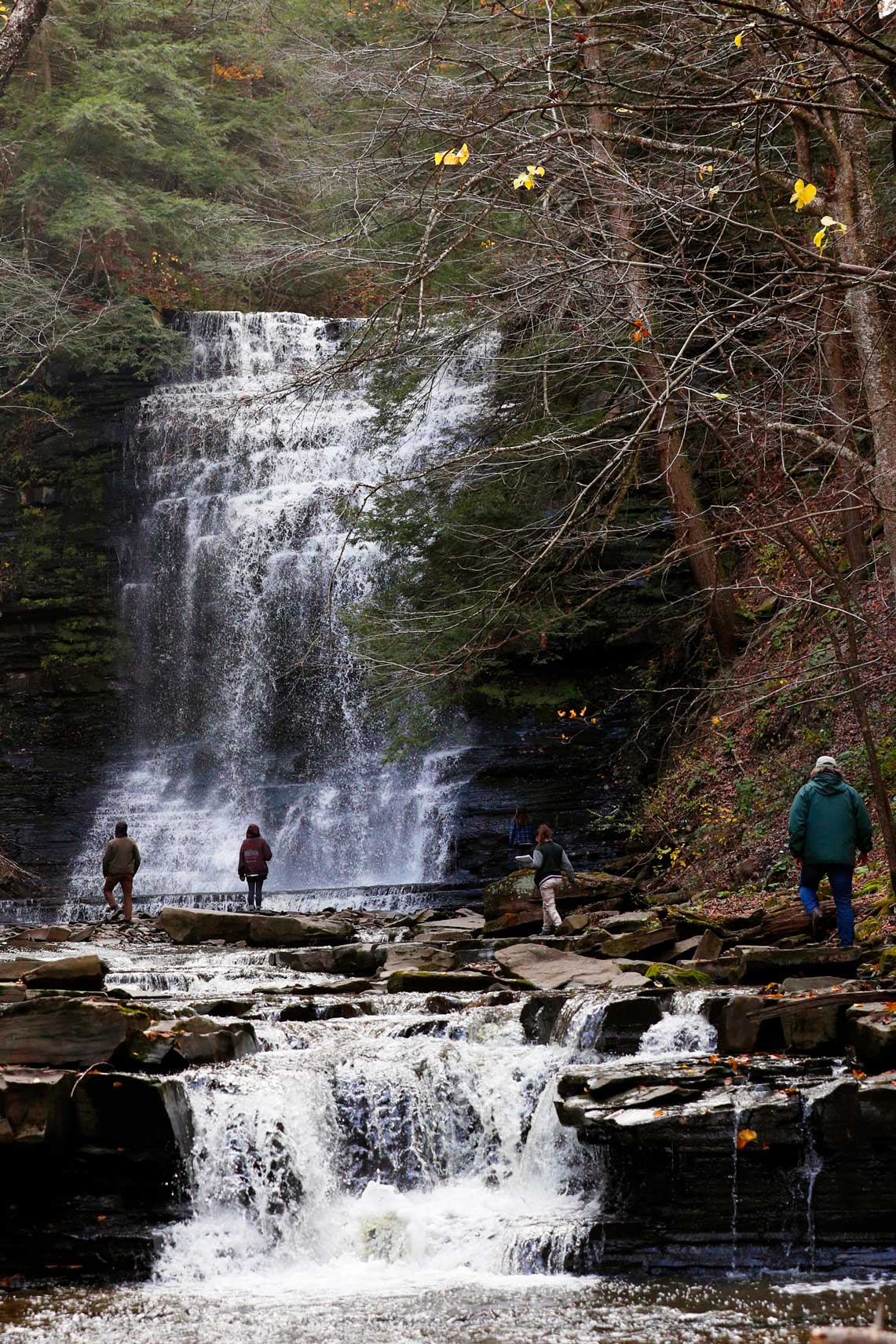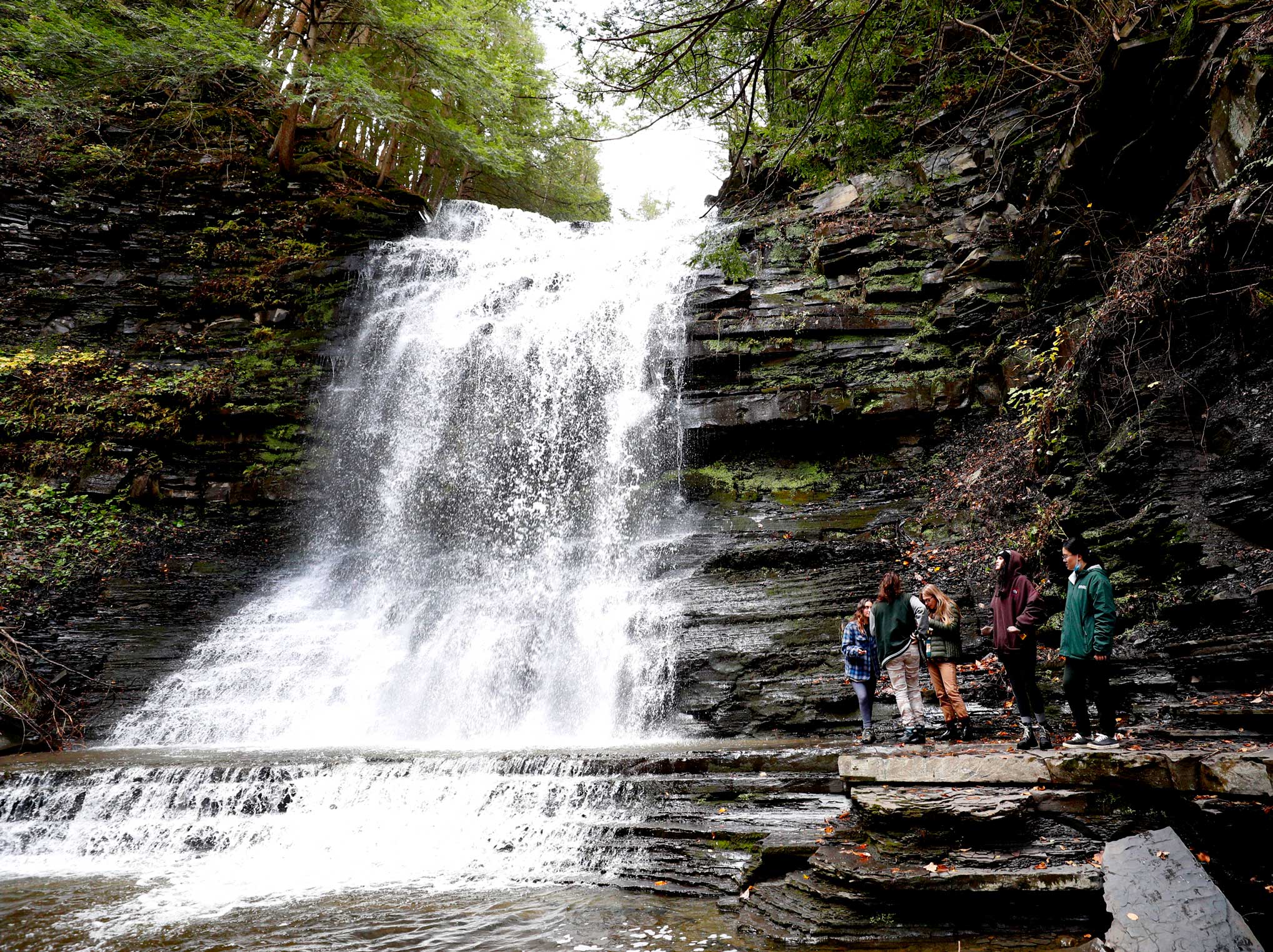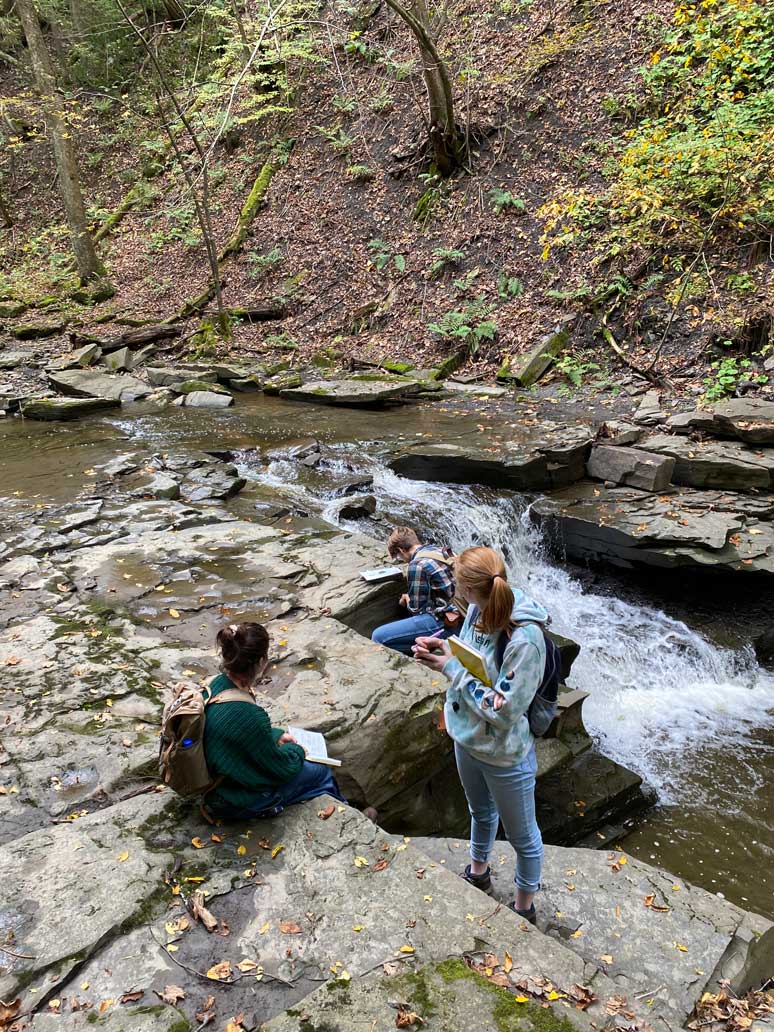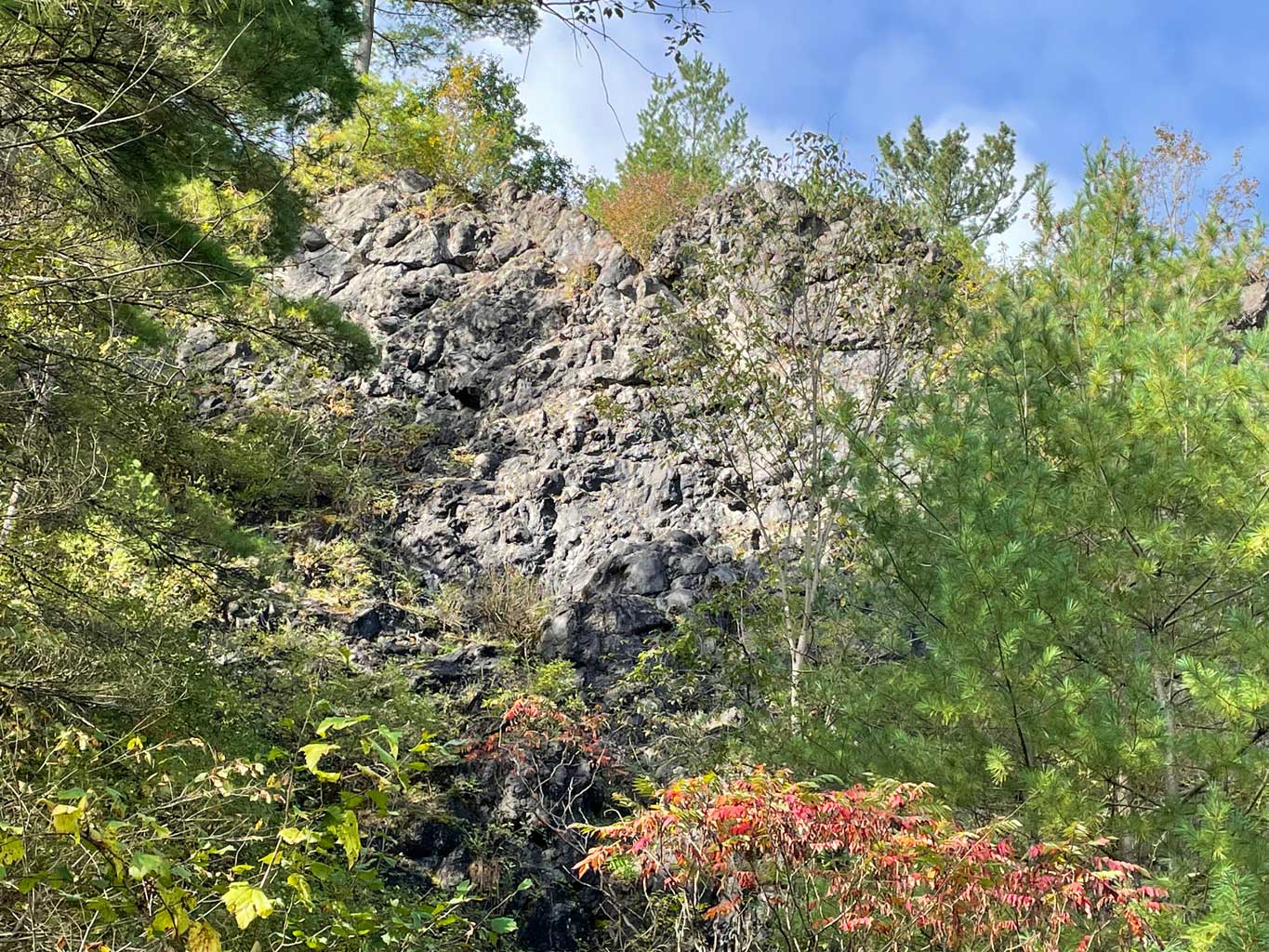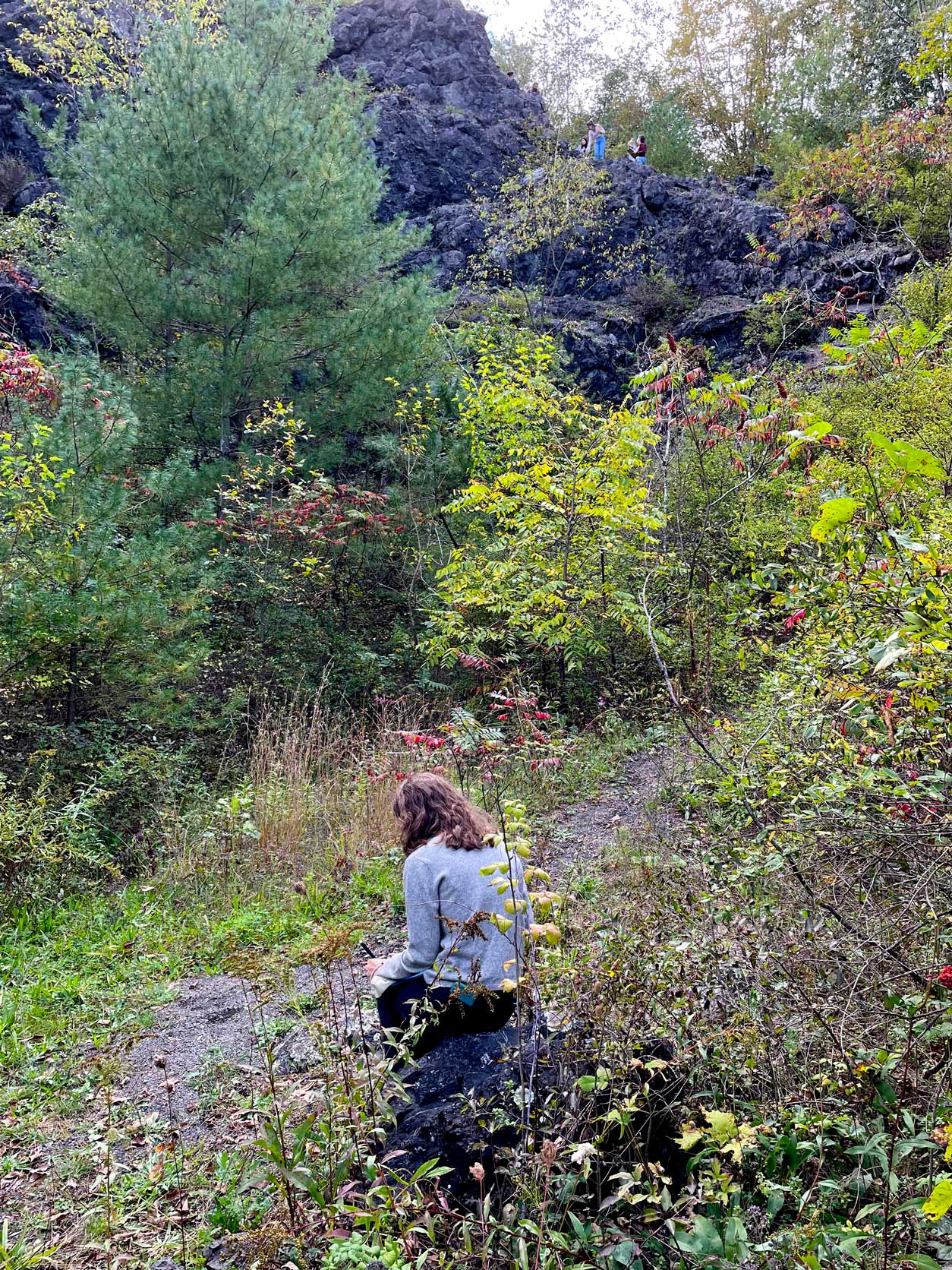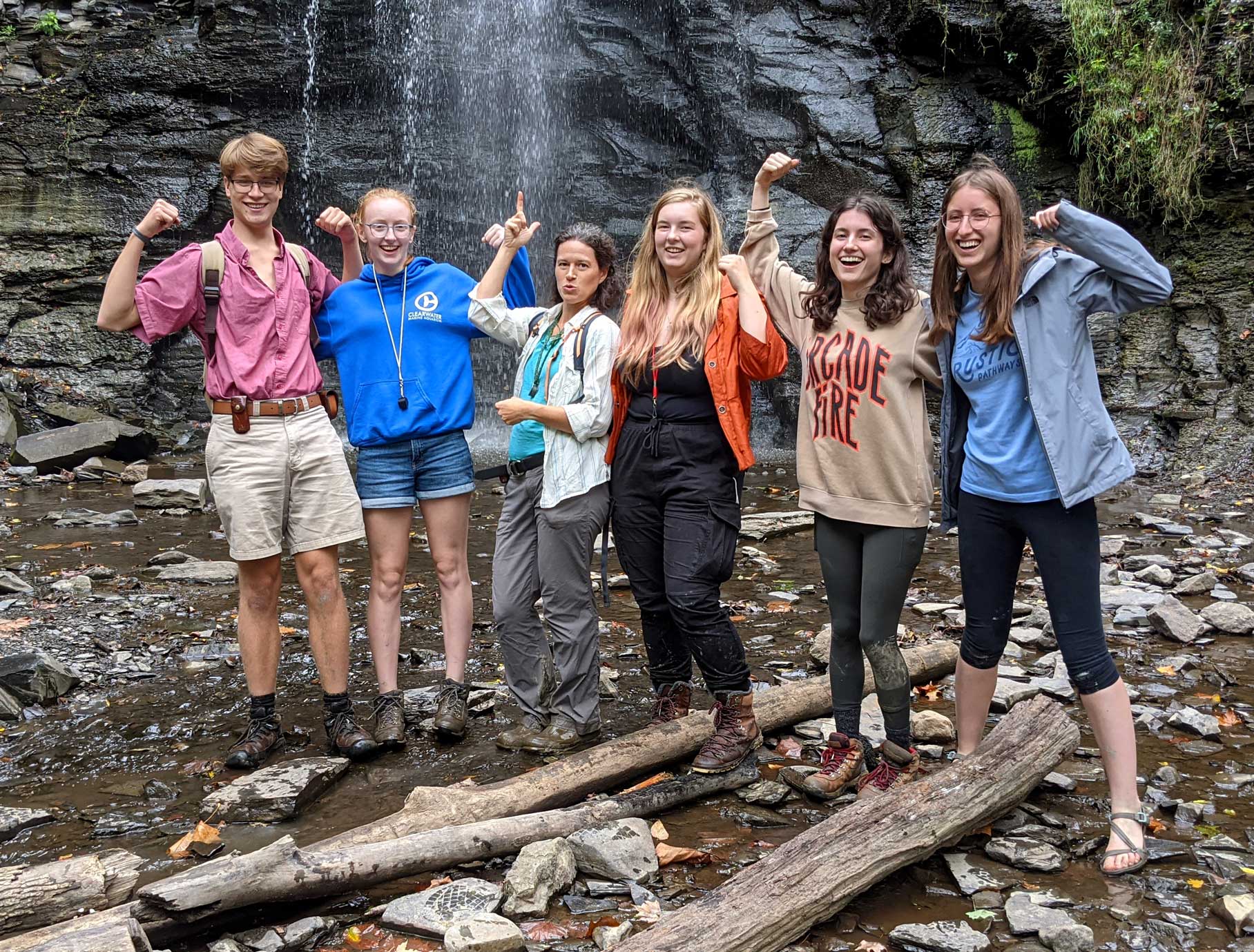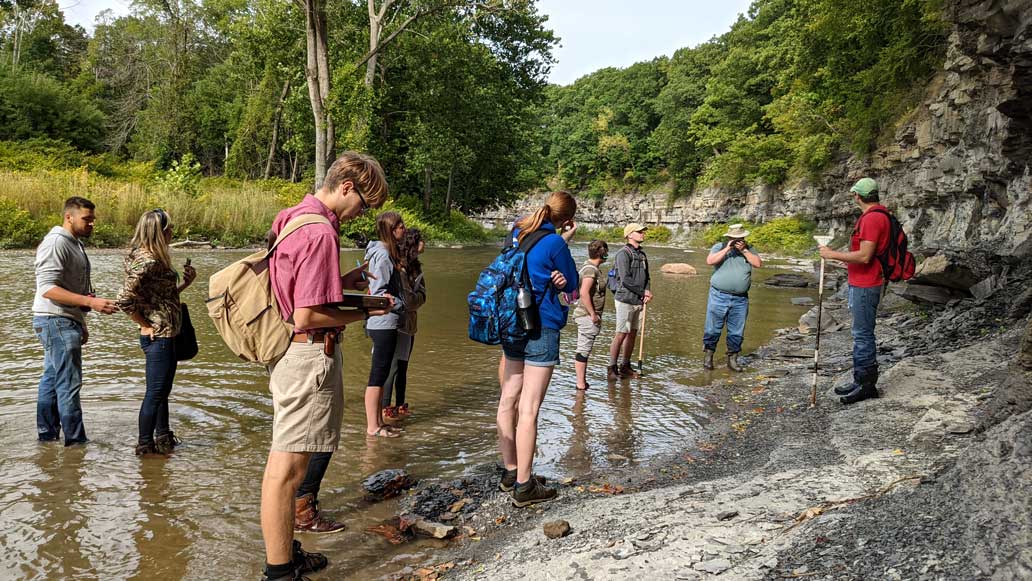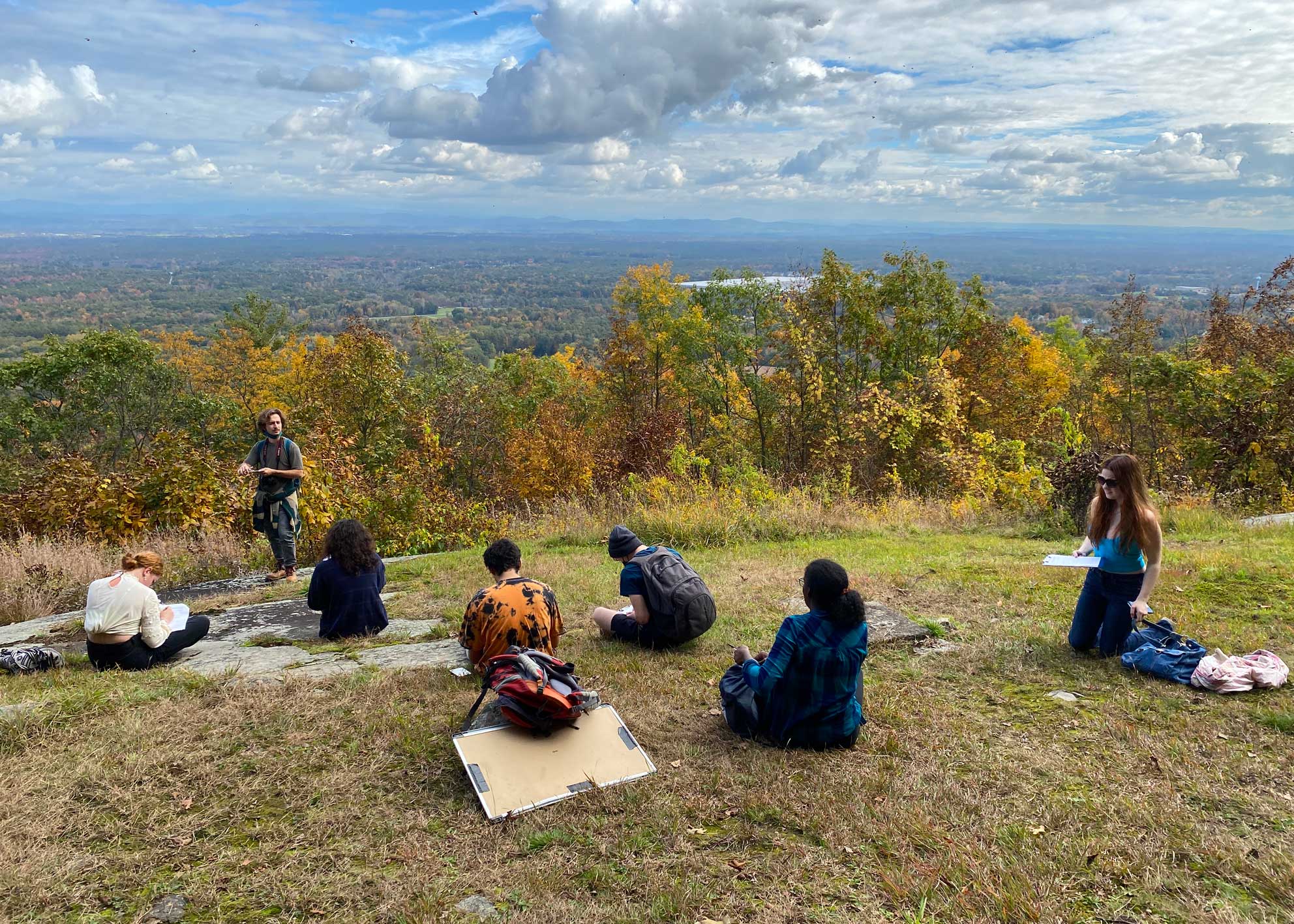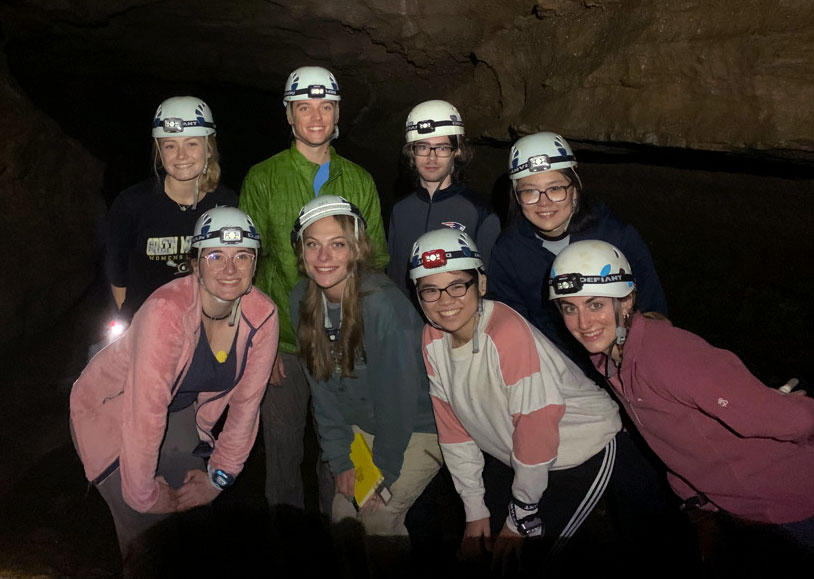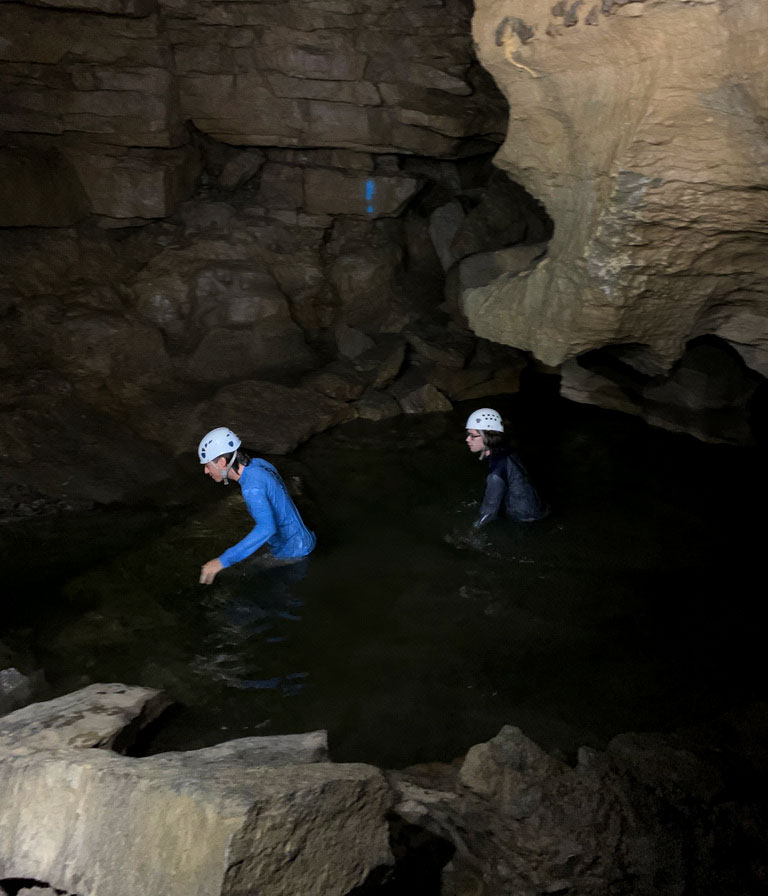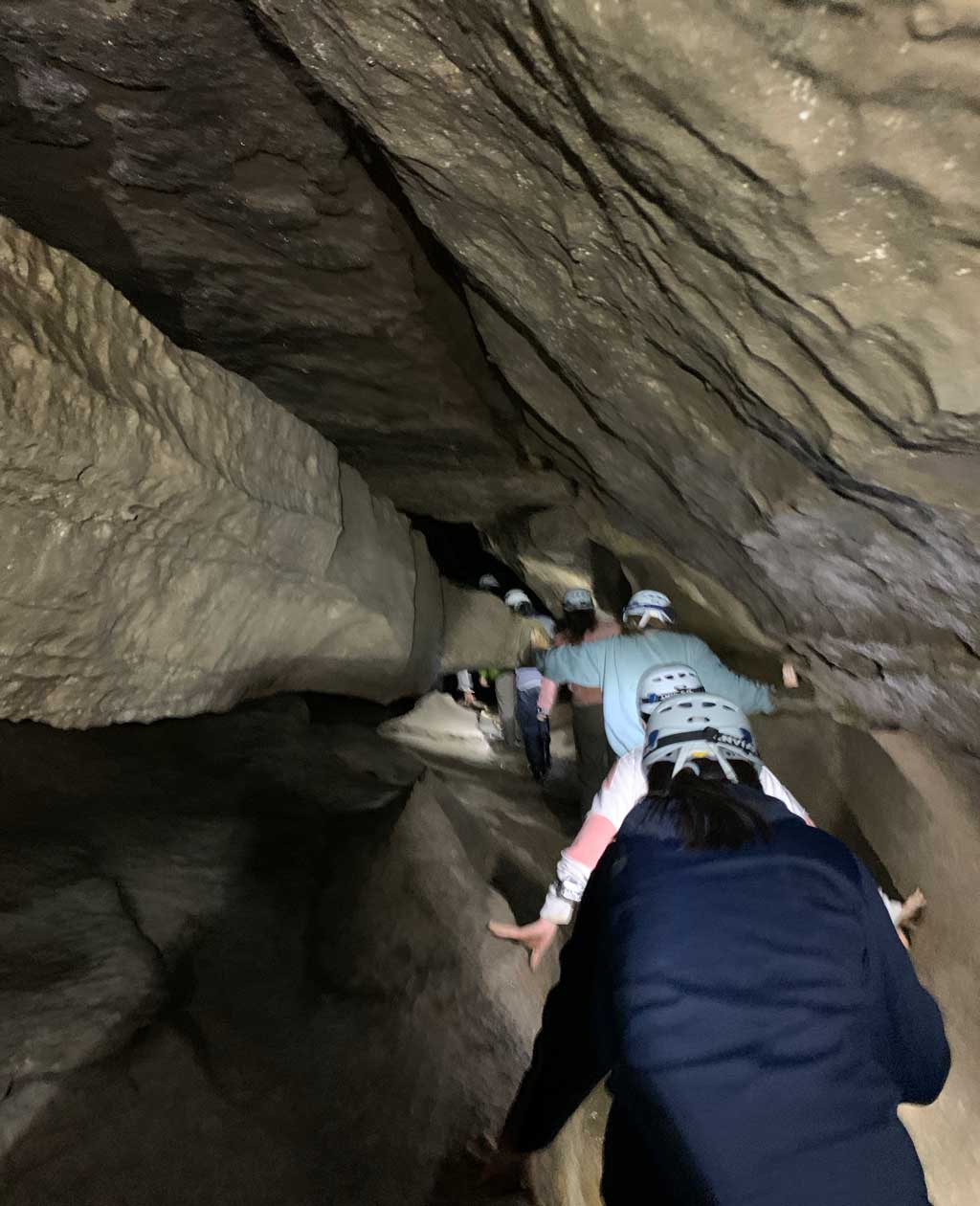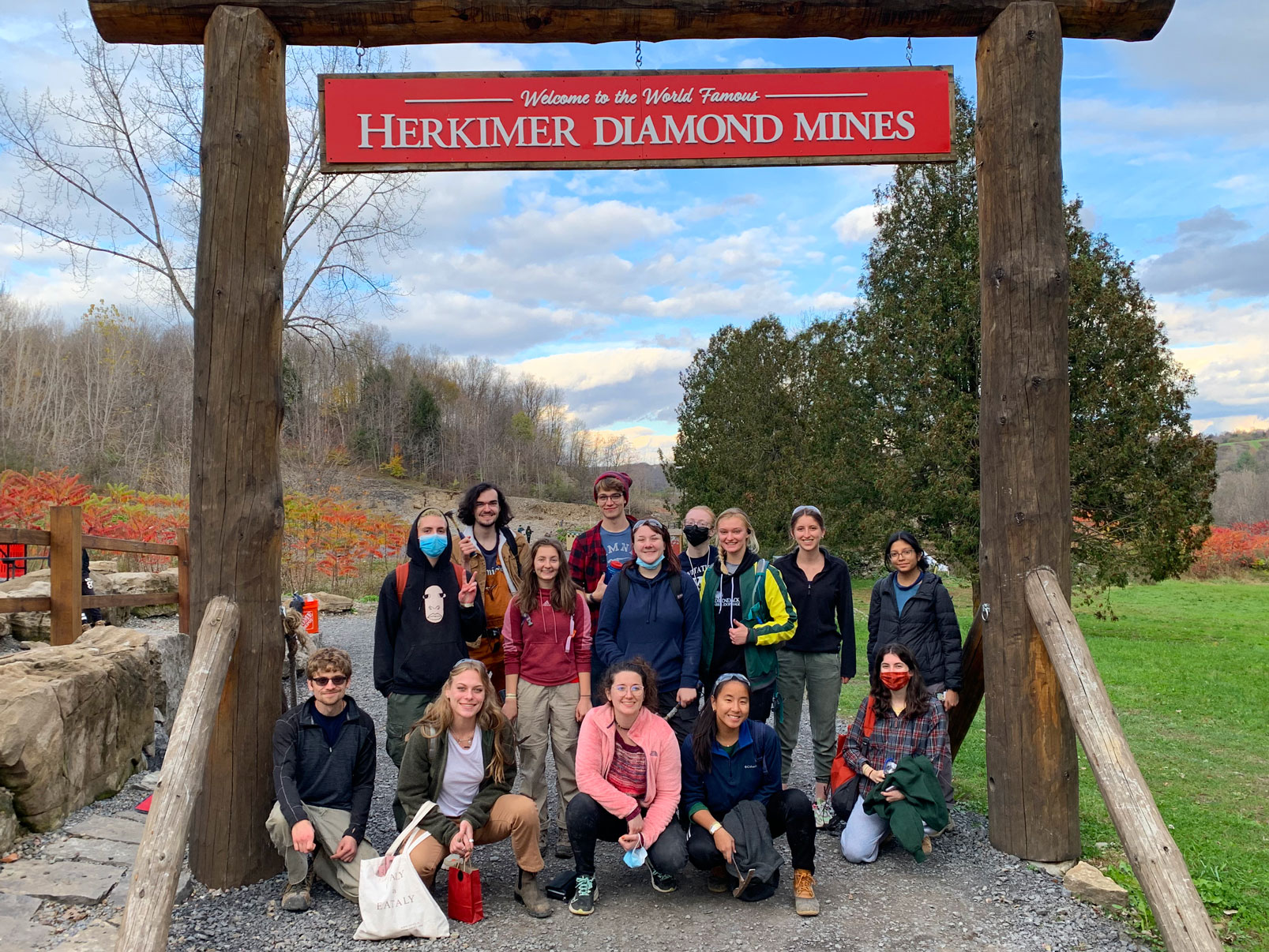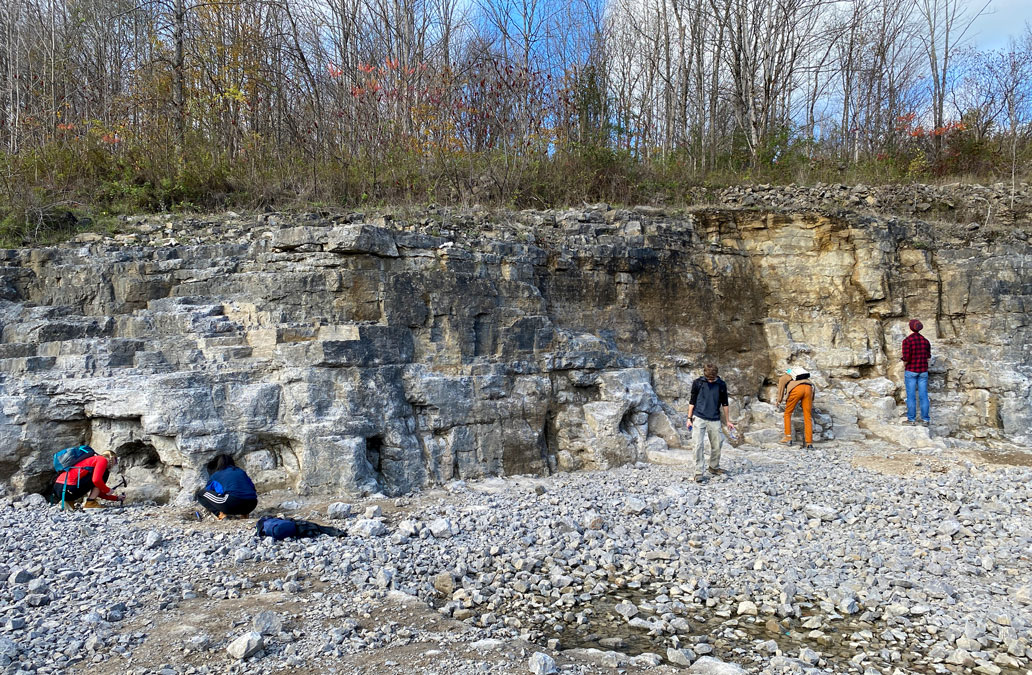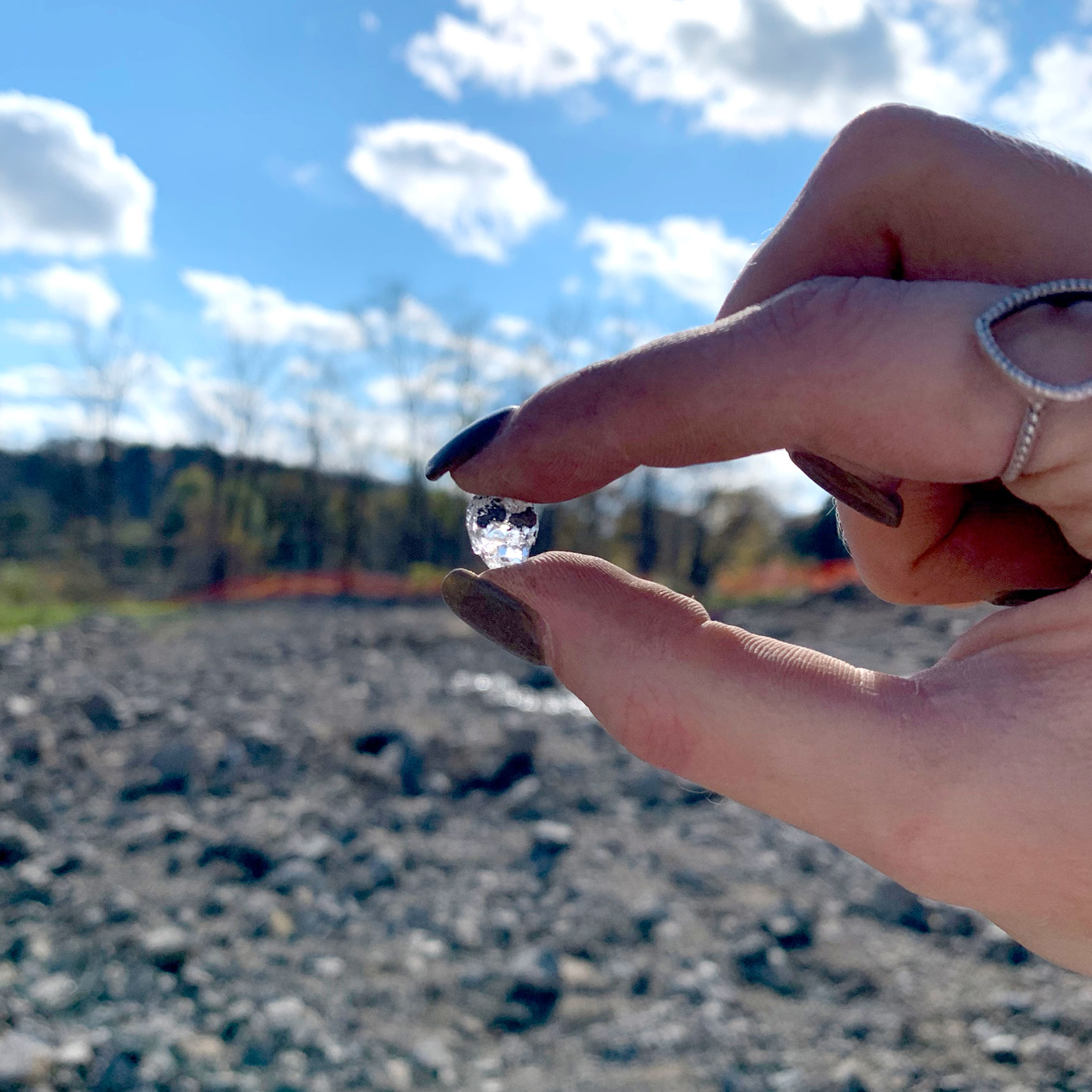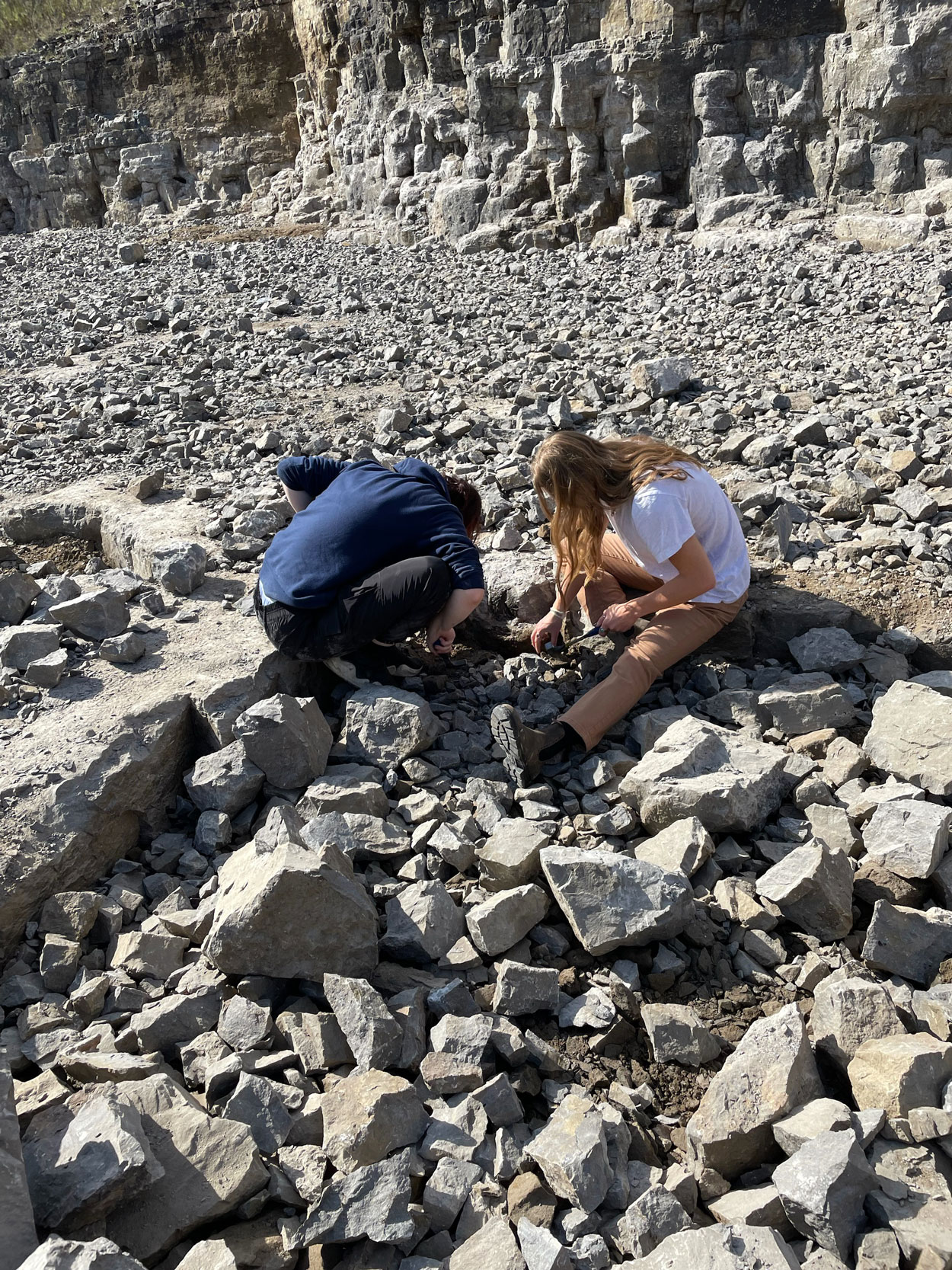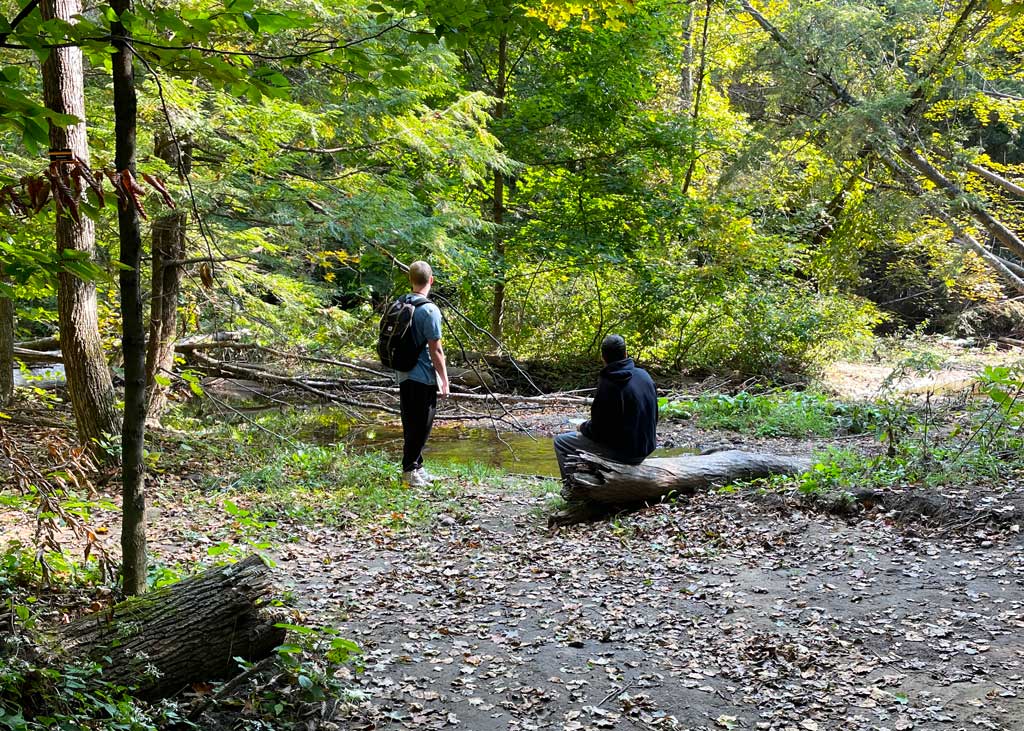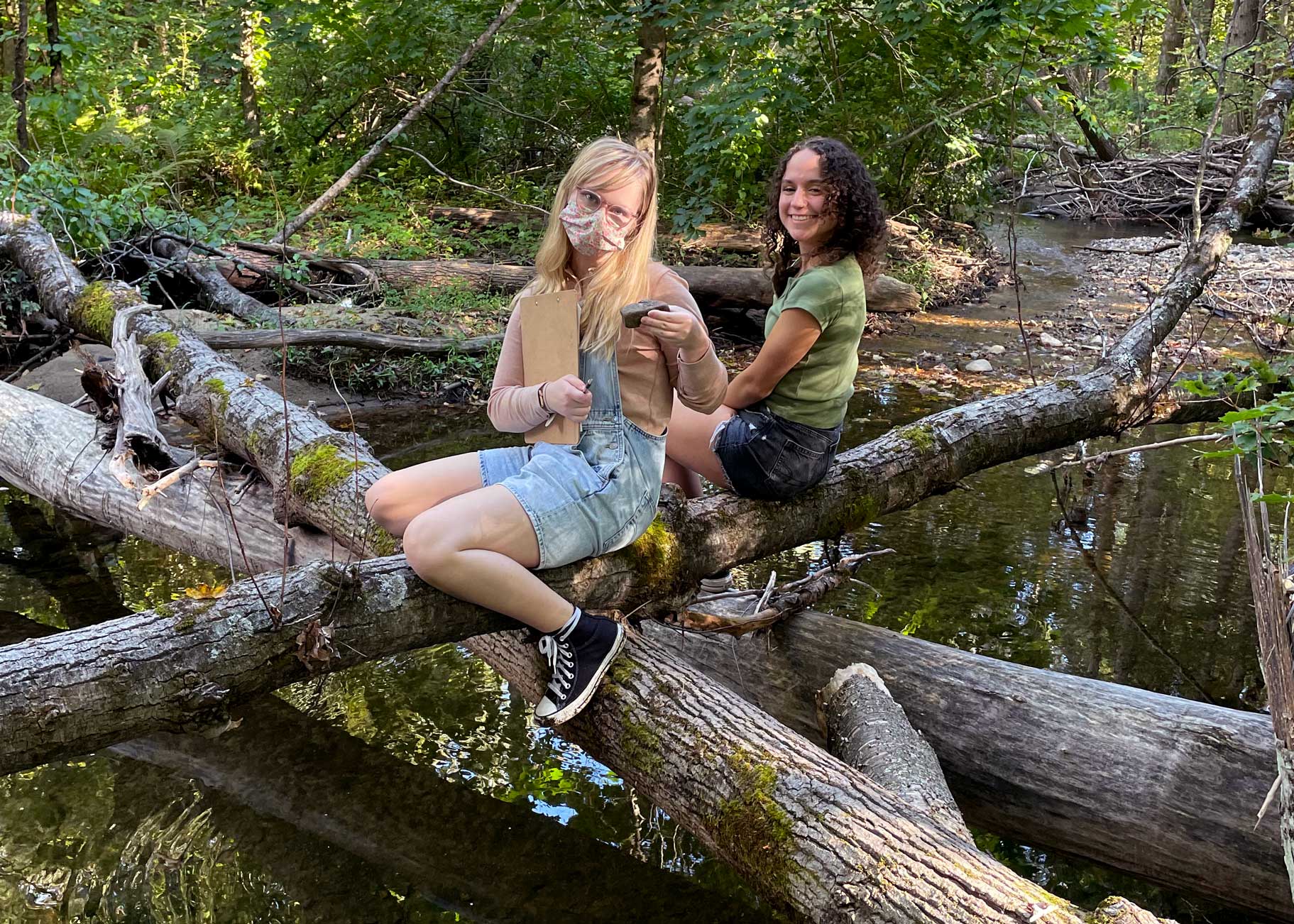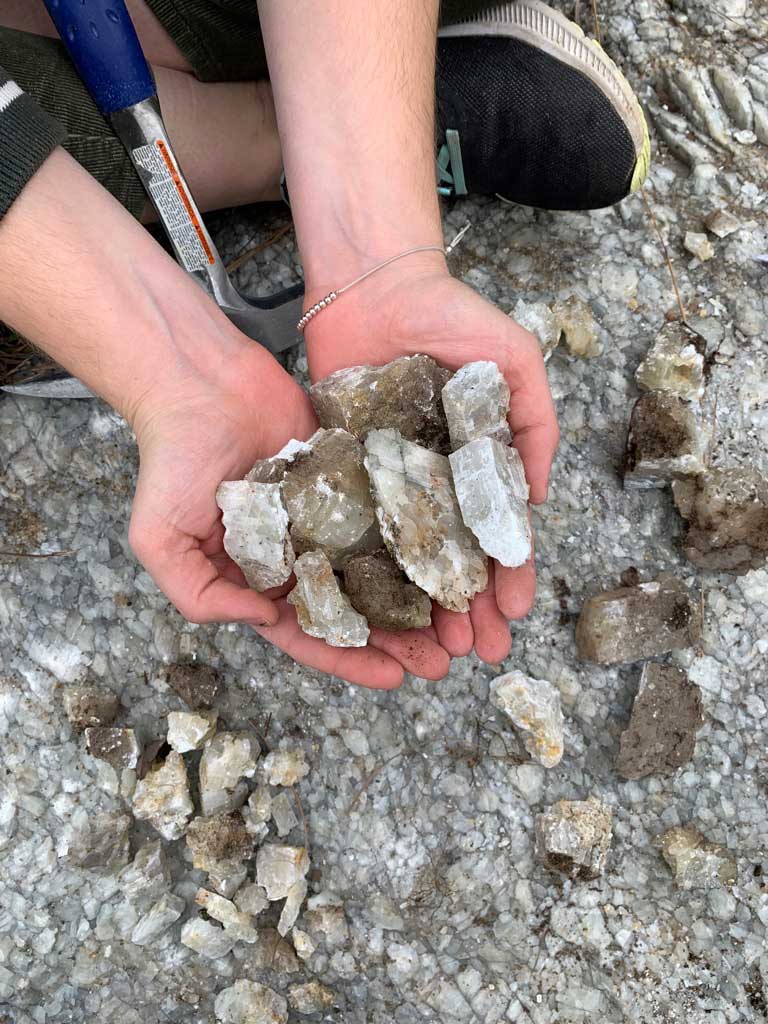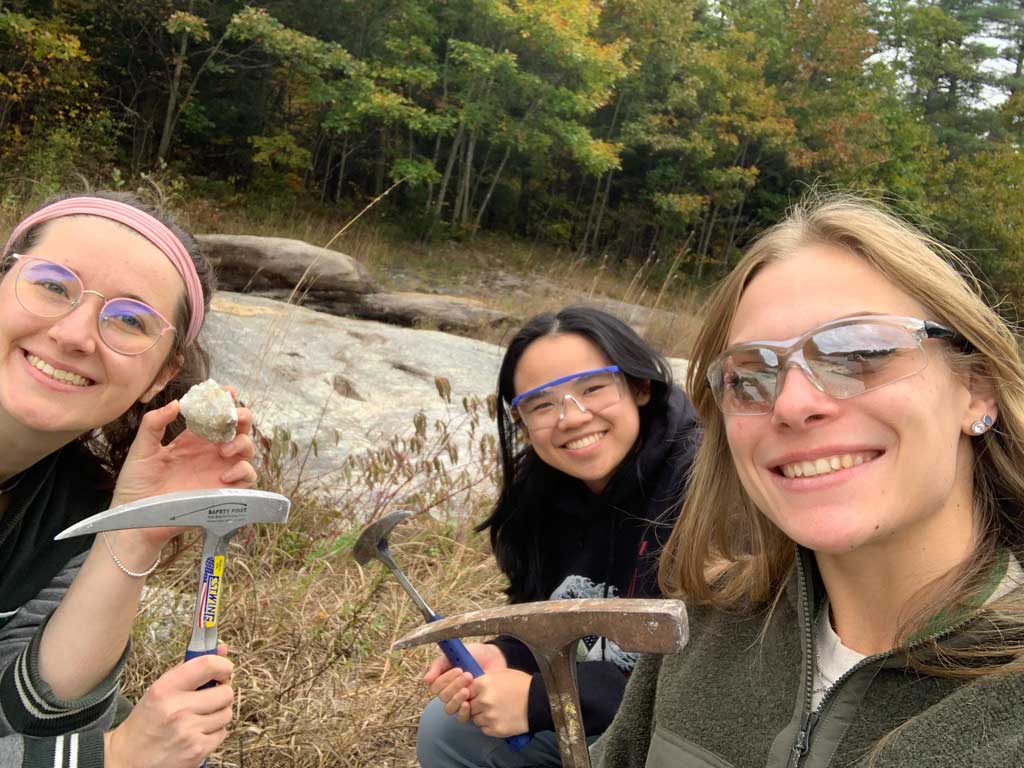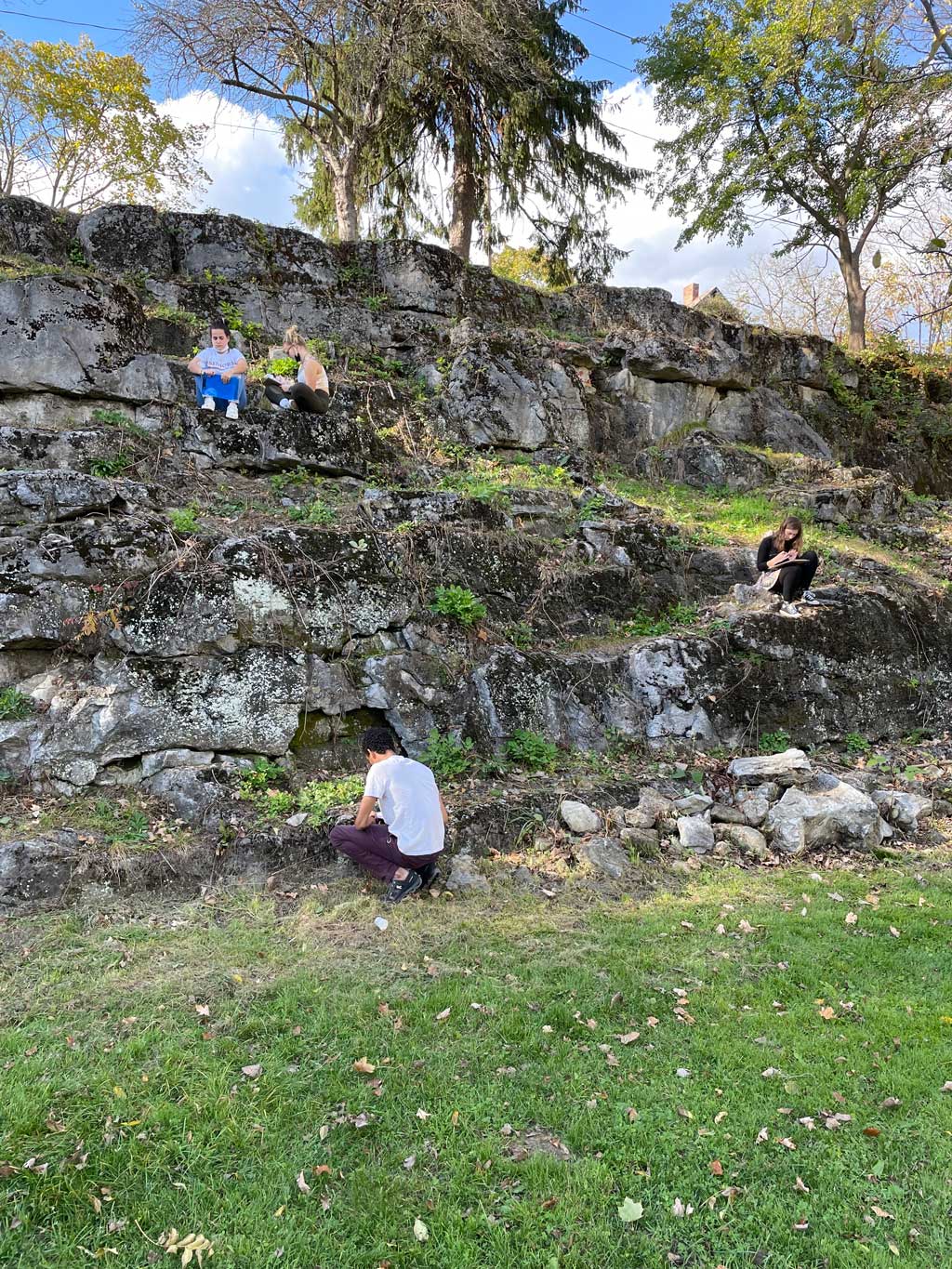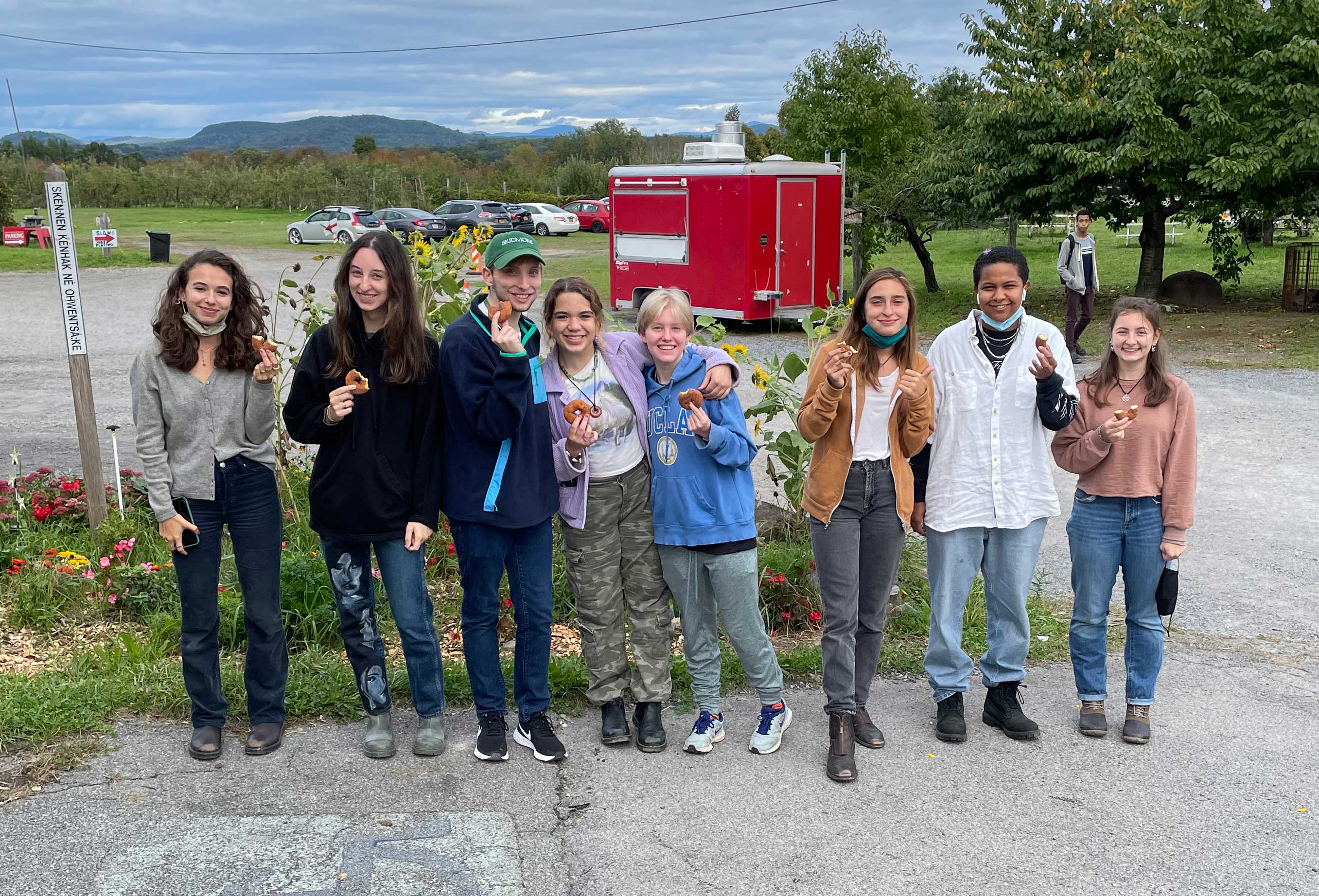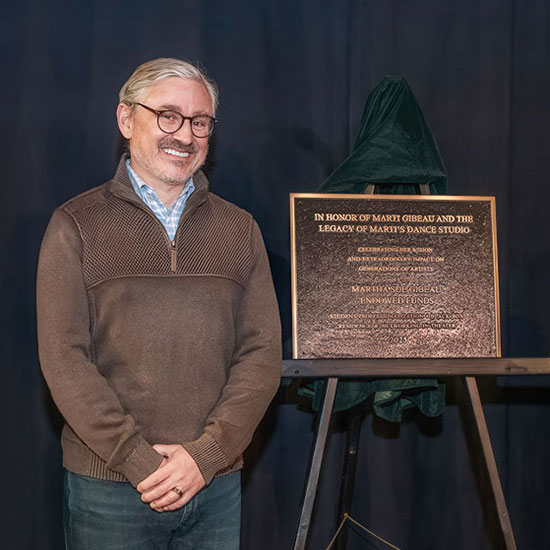A geological location not to be taken for granite
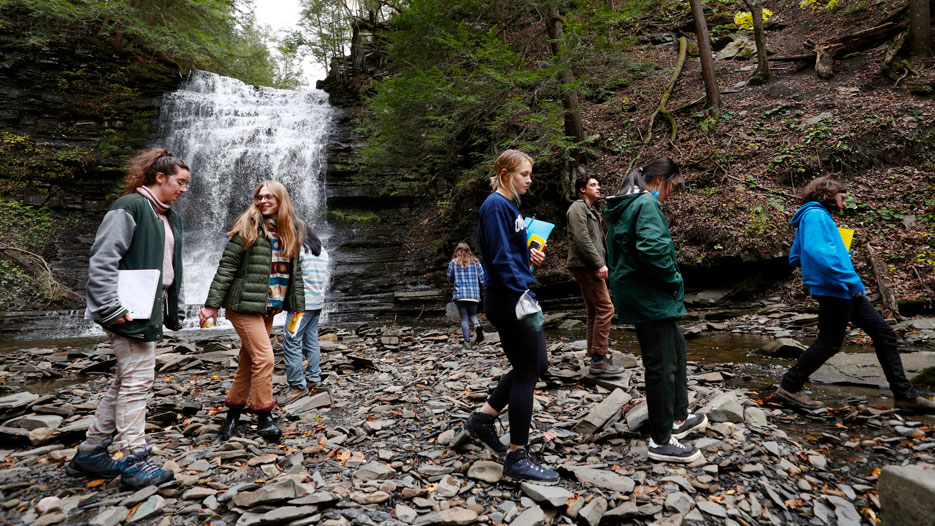
Your college decision checklist likely had or has some important “must haves” on it — strong academics, great faculty, competitive athletics, a campus you enjoy, an exciting town, and a vibrant student life.
Geosciences faculty and students have a suggestion for another item to consider: rocks.
Why? Because fossiliferous gorges, glacier-carved lakes and hills, limestone caves, granite mountains, and garnet mineral formations — unavailable at every college — are all in Skidmore’s backyard.
Skidmore, in Saratoga Springs, New York, is nestled into a regional gold mine of geological abundance (or at the bottom of a prehistoric ocean teeming with strange creatures, to be more accurate).
Whether it’s a two-minute trip to High Rock Park in downtown Saratoga Springs to study the fault line that exposed the city’s famous mineral springs, or a five-minute excursion out to Lester Park in nearby Greenfield to walk on internationally famous stromatolites (ancient blue-green algae formations from 490 million years ago) or the near infinite list of world-class geological formations available to us within a three- or four-hour drive, you just can’t take Skidmore’s location for granite.
The Geosciences Department showcases the scale of experiences available each semester, bringing students on dozens of field trips all around the region.
Each experience is an opportunity to better understand planet Earth, its materials, and the processes that act upon them, as well as how humanity both shapes and is shaped by the planet.
Of quartz, geoscientists make lots of silly geoscience puns. But, more importantly, geosciences help us to appreciate the materials and processes of our planet and situate the decisions that we make about important issues like climate change in a way that considers different scales of time and space.Jennifer Cholnokysenior lecturer and chair of the Department of Geosciences
Taught in a liberal arts context, geosciences allow students to consider how knowledge of the ground beneath us, our air, and our oceans can help communities address pressing contemporary issues, including the availability of clean water, planning to mitigate natural disasters, the distribution of natural resources, and changes to the climate.
"For geosciences students, the outdoors is our lab, our library, our studio, our stage, our museum, and our field of play," said Associate Professor of Geosciences Amy Frappier.
Beyond geosciences majors, the department’s courses are also popular with students pursuing many different courses of study at Skidmore.
Pictured below are some of the recent field trips Skidmore students have taken to experience firsthand what some college students may only ever see in textbooks.
Curious about what you’re seeing? Scroll further for an excerpt about our geological context courtesy of the Geosciences Department.
Recent geosciences field trips
Our geological context
The Saratoga vicinity lies at the intersection of the Hudson and Mohawk River valleys. The region is bounded by the Proterozoic metasediments of the Adirondacks to the north, the Cambro-Ordovician Taconics to the east, the Devonian Helderbergs and Catskills to the south, and flat-lying Cambrian to Silurian strata to the west.
The Woodlawn fault passes through the center of Skidmore's campus, which itself is
underlain by the lowermost Ordovician stromatolite- and chert-bearing Gailor Dolomite
southeast of the fault and Grenville age garnitiferous gneiss to the northwest.
Immediately to the east of the campus, the Gailor is dropped into the shallow subsurface
by the Saratoga fault system. East of this fault, the Middle Ordovician Canajoharie
Shale overlies the Gailor and serves as the cap rock beneath, which the world-famous
Saratoga mineral springs flow on the down-dropped eastern side of the fault.
It can be truly said without exaggeration that the City of Saratoga Springs owes its existence, and Skidmore College owes its location, to a unique and complex interplay of geologic phenomena that extend in time from the Holocene back to the late Proterozoic Grenville Orogeny.
The preceding could stand alone to afford any geosciences department a wealth of proximal field study sites for its students, but in Skidmore's case that need not suffice. The world-famous stromatolite "reefs" of the uppermost Cambrian Hoyt Limestone outcrop immediately to the west of campus in the "Skidmore" quarry and at Lester Park. The latter is the site of the first report of stromatolites and of ooids in North America as well as the type locality of Cryptozoon proliferum, which is globally the first stromatolite to have been given Linnaean name.
Just a few miles to the east of campus, Stark's Knob, New York's State's only "volcano," is exposed on the west side of the Hudson River north of Schuylerville. Stark's Knob is an Ordovician pillow basal that is now part of the Taconic overthrust belt. It is named for General John Stark, who mounted a battery of cannon on the site to block the retreat of the British army's northward retreat following the fall 1777 Battle of Saratoga, otherwise known as the turning point of the American Revolution.
On the way to Saratoga from Quebec, the British army traveled on lakes and through valleys that occupy down-dropped blocs of fault systems that are generically related to the Woodlawn and Saratoga faults. The Battle of Saratoga itself was largely fought on the topset beds of a Holocene delta complex of postglacial Lake Albany. And, a small part of the campus stood as a small island above the 450 feet high stand elevation of Lake Albany.
Dune and beach deposits, along with glacial tills, constitute the surficial sediments of campus and lake bottom varved clays underlie the sports fields to the west. A drumlin field and a buried channel of the Pleistocene Hudson River lie only a few kilometers to the west in the towns of Greenfield and Milton. The channel fill, now known as the Kayaderosseras aquifer, is one of the Saratoga vicinity's primary sources of potable water.

